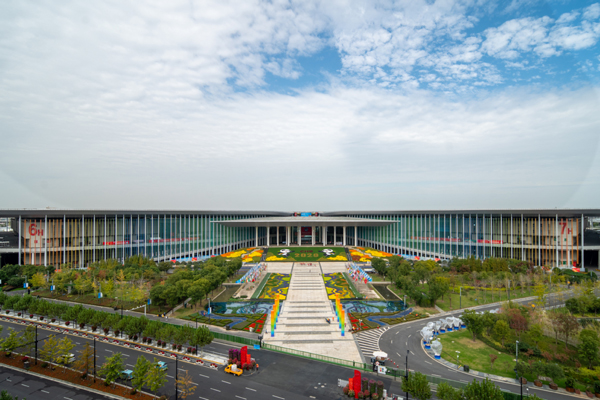

The National Exhibition and Convention Center (Shanghai) serves as the venue of the CIIE. [Photo by Gao Erqiang /chinadaily.com.cn]
The Hongqiao area in Shanghai has been attracting more businesses just a year after the central government put forward a plan to build the Hongqiao International Hub for Opening-up, according to municipal officials.
Zong Ming, vice mayor of Shanghai, said at a news conference on Wednesday that the Hongqiao Central Business District generated a tax revenue of 34.6 billion yuan ($5.48 billion) in 2021, up 29.1 percent from the previous year.
Six multinational companies and 13 big private domestic companies have chosen to set up their regional headquarters in the district, while the total number of newly registered company headquarters in the Hongqiao area exceeded 400 last year, he added.
Despite the pandemic, more than 35 trade promotion agencies have established offices in the Hongqiao Oversea Trade Center, which was founded in 2018 along with the inaugural China International Import Expo.
Hongqiao now boasts a combined exhibition space of 4.68 million square meters that hosted 4.7 million people last year, according to Zong.
Personnel and goods traffic in the zone has also been on the rise as the Hongqiao Comprehensive Transport Hub, which comprises a railway station, an airport, several metro lines and long-distance bus terminals, reported an increase of 17.4 percent in passenger throughput and a 13 percent growth in freights.
Located in the western part of Shanghai, the Hongqiao area is linked with the demonstration zone for integrated development of the Yangtze River Delta. Zong said the area has implemented 35 cross-provincial services, such as accepting business registration and foreigner work permit applications from Zhejiang and Jiangsu provinces.
The construction of a slew of transportation infrastructure linking Hongqiao and cities in the Yangtze River Delta has started. These facilities include the railways of the Shanghai-Suzhou-Huzhou line and the Jiading-Minhang line, as well as extensions to metro lines 2, 13 and 17.
In the past three years, the number of commuters between the Hongqiao business district and cities in the delta increased by 46.9 percent, said Zong.